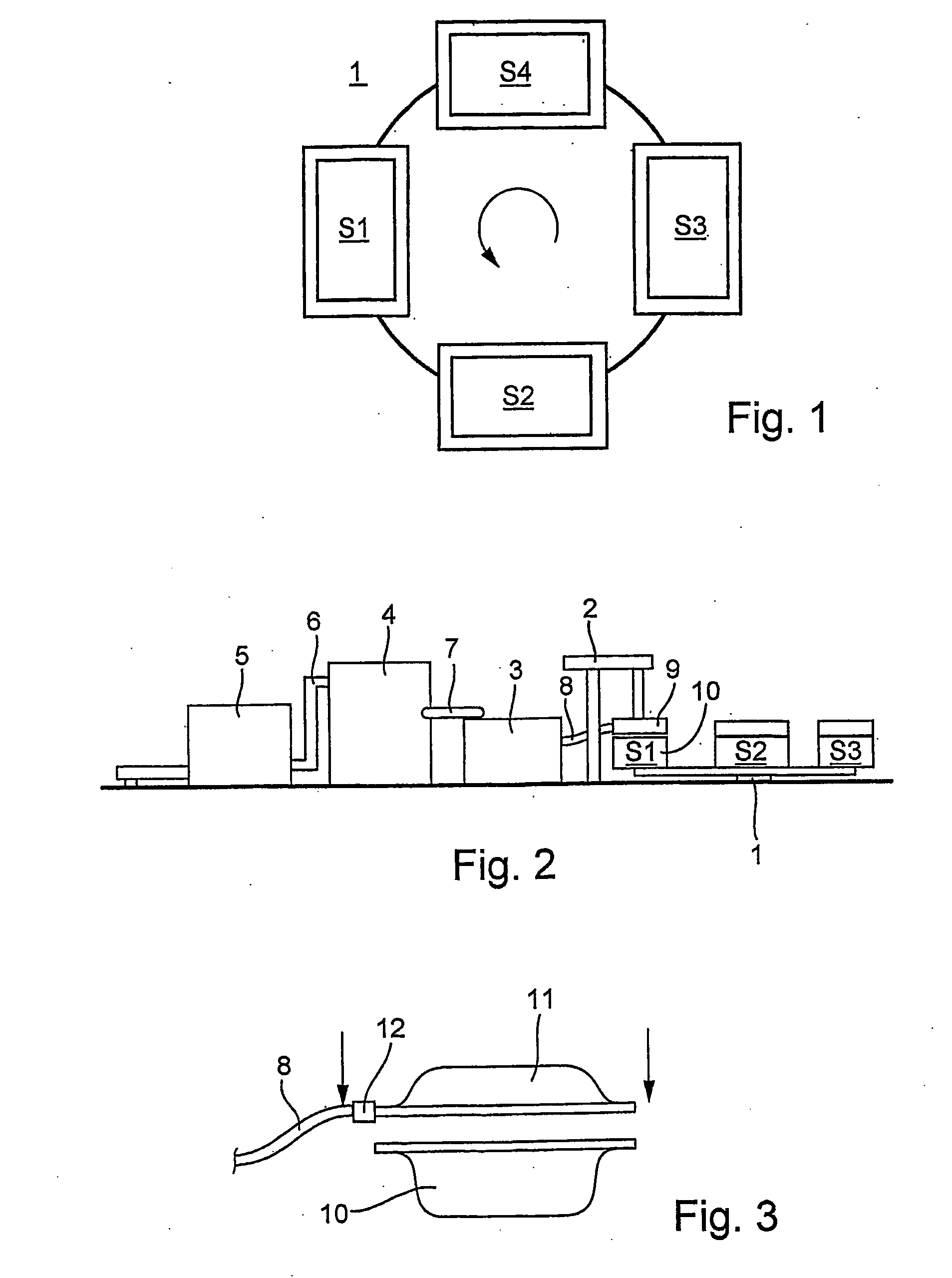Method and device for producing three-dimensional molded parts and corresponding molded part
a three-dimensional molded and corresponding technology, applied in the field of three-dimensional molded parts and corresponding molded parts, can solve the problems of difficult recycling of pu foam, reduced production efficiency, and high cost, and achieve the effect of reducing the production time of individual molded parts, good reproducibility, and optimizing the production of molded parts
- Summary
- Abstract
- Description
- Claims
- Application Information
AI Technical Summary
Benefits of technology
Problems solved by technology
Method used
Image
Examples
Embodiment Construction
[0032] The device shown in FIG. 1 comprises a blow in station S1, a heating station S2, a cooling station S3, and a removal station S4. The stations S1-S4 are arranged on a rotary table 1, which can rotate counterclockwise. In the blow in station S1, fiber material is blown into a closed mold until a preform is formed. In the heating station S2, the production mold is heated so that the preform solidifies into a molded part. In the cooling station S3, the production mold is cooled. In the removal station S4, the mold is opened so that the produced part can be removed.
[0033]FIG. 2 shows a complete system for producing molded parts, which comprises the rotary table 1, a supply device 2 for supplying and changing molds, a fan 3, a fiber storage device 4, and a lump opener 5. From rotary table 1, the blow in station S1, the heating station S2, and the cooling station S3 can be seen.
[0034] Premixed fiber lumps, which are used as raw material, are fed to the lump opener 5 and there chop...
PUM
| Property | Measurement | Unit |
|---|---|---|
| air pressure | aaaaa | aaaaa |
| density | aaaaa | aaaaa |
| stiffness | aaaaa | aaaaa |
Abstract
Description
Claims
Application Information
 Login to View More
Login to View More - R&D
- Intellectual Property
- Life Sciences
- Materials
- Tech Scout
- Unparalleled Data Quality
- Higher Quality Content
- 60% Fewer Hallucinations
Browse by: Latest US Patents, China's latest patents, Technical Efficacy Thesaurus, Application Domain, Technology Topic, Popular Technical Reports.
© 2025 PatSnap. All rights reserved.Legal|Privacy policy|Modern Slavery Act Transparency Statement|Sitemap|About US| Contact US: help@patsnap.com



